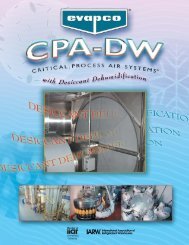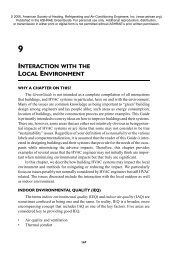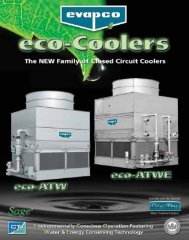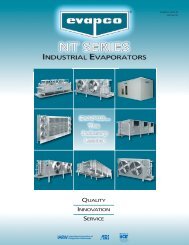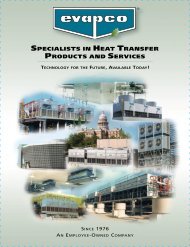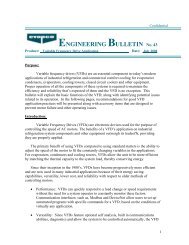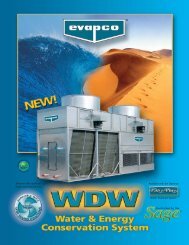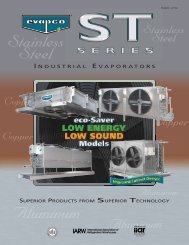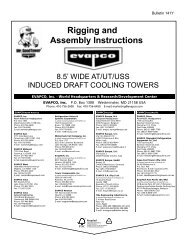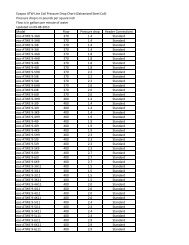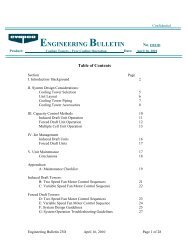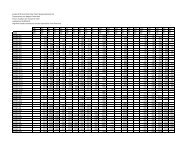Smart Shield Product IOM - Evapco
Smart Shield Product IOM - Evapco
Smart Shield Product IOM - Evapco
Create successful ePaper yourself
Turn your PDF publications into a flip-book with our unique Google optimized e-Paper software.
<strong>Smart</strong> <strong>Shield</strong> Installation, Operation & Maintenance Manual<br />
8.0 Passivation<br />
All new evaporative cooling equipment which includes any galvanized materials of construction requires initial passivation to<br />
maximize the service life of the equipment. Consult your evaporative cooling equipment's instruction, operation and maintenance<br />
manual for additional information regarding passivation.<br />
A site-specific passivation plan is not included with a <strong>Smart</strong> <strong>Shield</strong> system unless it is specifically called out as a separate line<br />
item. <strong>Evapco</strong> recommends that the siteʼs water treatment vendor should be contacted several weeks prior to adding any water to a<br />
new evaporative cooling system so they can provide a passivation plan along with associated passivation plan costs.<br />
9.0 Legionella<br />
Legionella bacteria are commonly present in natural and municipal water systems. Human exposure, and subsequent infection,<br />
depends on several concurrent factors. Drift that can emit from evaporative cooling equipment may provide a transmission mode<br />
of Legionella bacteria to humans. Human infection, however, is dependent on various factors such as the hostʼs susceptibility, the<br />
level of contamination, and the virulence of the bacteria.<br />
The Biocides used as part of the <strong>Smart</strong> <strong>Shield</strong> system have been shown to be effective against Legionella bacteria in laboratory<br />
testing. Even so, EVAPCO does not claim that using the <strong>Smart</strong> <strong>Shield</strong> system will eliminate the presence of Legionella in water or<br />
control the potential risk factors for human infection.<br />
There are many practices which may be effective in reducing the potential for Legionella infection. For more information, see<br />
ASHRAE Guideline 12-2000, “Minimizing the Risk of Legionellosis Associated with Building Water Systems”.<br />
10



